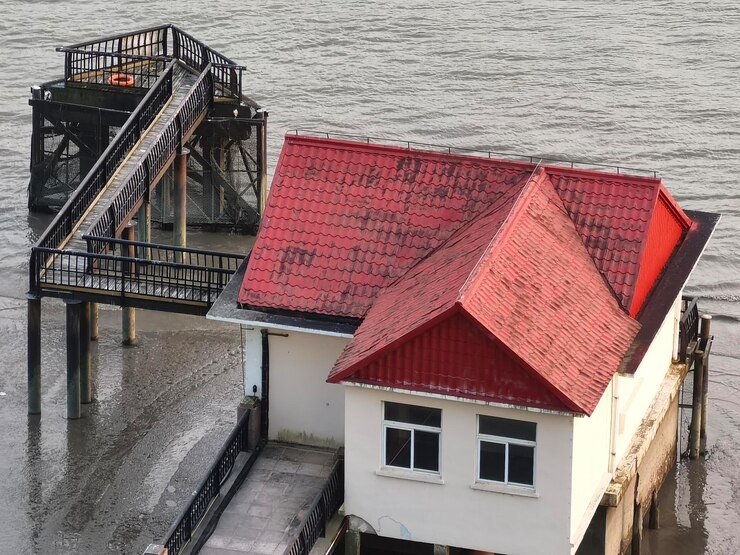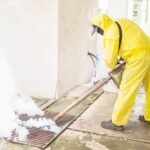Coastal homes offer breathtaking views and proximity to the ocean, but they also face unique challenges when storms strike. Unlike inland properties, coastal homes are at a higher risk of damage from hurricanes, storm surges, and saltwater exposure. Effective storm damage restoration requires specialized expertise to address these distinct vulnerabilities and ensure long-term structural integrity.
The Unique Challenges of Coastal Storm Damage
1. Hurricane-Force Winds and Flying Debris
Coastal areas often experience extreme wind speeds during storms, which can rip off roofs, shatter windows, and send debris crashing into homes. These conditions require restoration professionals to:
- Reinforce structures to withstand high winds.
- Replace broken windows with impact-resistant glass.
- Repair roofing with hurricane-rated materials.
2. Storm Surges and Flooding
Storm surges bring walls of water inland, flooding homes with saltwater and debris. This poses several risks:
- Foundation Erosion: The force of rushing water can weaken the home’s foundation.
- Saltwater Damage: Unlike freshwater flooding, saltwater corrodes metal, wood, and concrete, leading to long-term structural issues.
- Mold Growth: Standing water creates an ideal breeding ground for mold within 24 to 48 hours.
Restoration experts use specialized drying techniques, apply anti-corrosion treatments, and implement mold prevention strategies to mitigate these risks.
3. High Humidity and Moisture Retention
Coastal climates already have high humidity levels, making it more challenging to dry a storm-damaged home. Restoration professionals use:
- Industrial-strength dehumidifiers and air movers to remove excess moisture.
- Moisture meters to detect hidden water pockets behind walls and under flooring.
- Mold-resistant treatments to prevent future microbial growth.
4. Saltwater and Corrosion Concerns
Salt in the air and floodwater accelerates corrosion in building materials and electrical systems. Specialists in storm damage restoration apply protective coatings and replace compromised materials to prevent deterioration.
The Role of Professional Storm Restoration Experts
1. Comprehensive Damage Assessment
Unlike general contractors, storm restoration specialists conduct detailed inspections to identify structural weaknesses, hidden water damage, and areas prone to future deterioration.
2. Custom Repair and Reinforcement Plans
Each coastal home requires a tailored restoration plan. Professionals:
- Use flood-resistant building materials.
- Install reinforced roofing and siding.
- Elevate electrical systems to reduce future flood risk.
3. Mold Remediation and Prevention
Mold can spread rapidly in humid coastal environments. Restoration teams:
- Remove contaminated materials.
- Apply antimicrobial treatments.
- Improve ventilation to keep humidity levels low.
4. Insurance Claim Assistance
Navigating insurance claims after a storm can be overwhelming. Professional restoration companies:
- Document damage thoroughly for claims.
- Work with adjusters to ensure accurate assessments.
- Help homeowners maximize their insurance benefits.
Why DIY Restoration Falls Short
Many homeowners attempt to handle storm damage repairs themselves, but coastal restoration requires specialized expertise. Common DIY pitfalls include:
- Incomplete Drying: Hidden moisture leads to mold and long-term damage.
- Improper Material Selection: Using standard materials instead of weather-resistant ones results in recurring issues.
- Electrical and Structural Risks: DIY repairs on wiring or weakened structures can be hazardous.
The Long-Term Benefits of Expert Storm Restoration
Investing in professional storm damage restoration ensures:
- Stronger Homes: Reinforced materials and construction techniques improve storm resilience.
- Healthier Living Environments: Proper mold remediation and moisture control prevent respiratory issues.
- Higher Property Value: A well-restored home retains its market value and appeal.
Final Thoughts
Storm damage in coastal areas demands more than quick fixes—it requires expertise, specialized materials, and preventive strategies to ensure long-term durability. Homeowners should rely on experienced professionals for storm damage restoration to protect their properties from future disasters. With expert restoration, coastal homes can withstand nature’s toughest challenges and remain safe for years to come.







